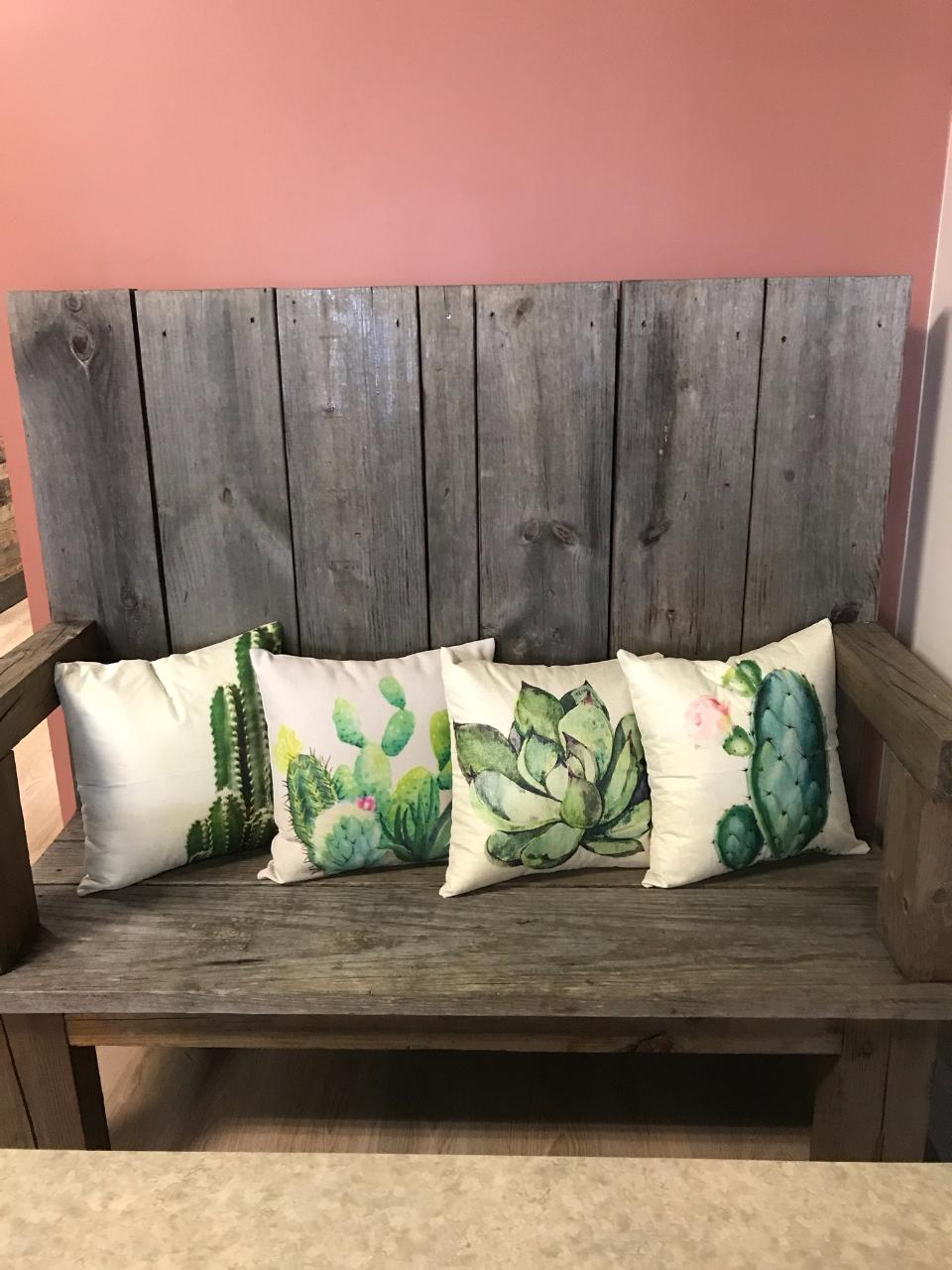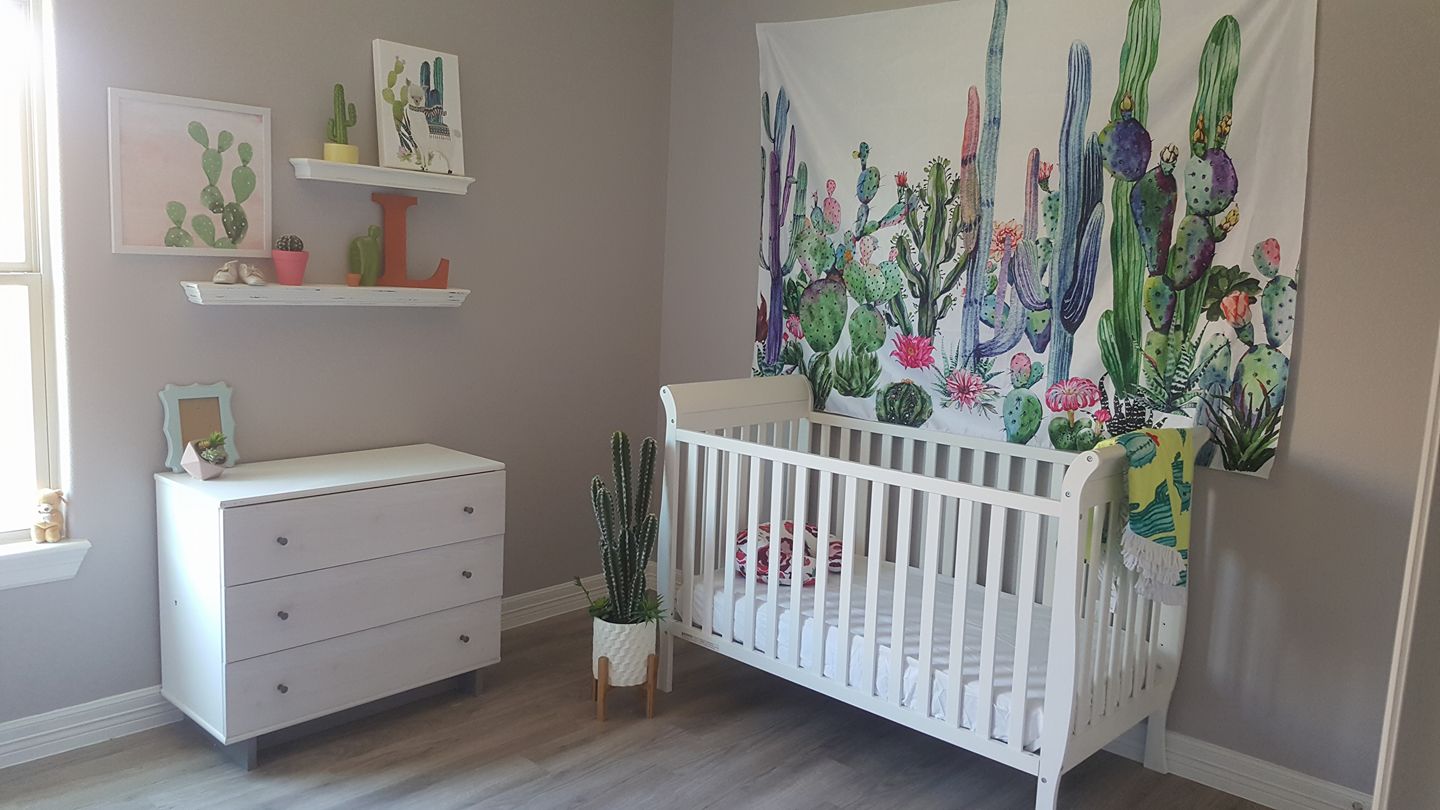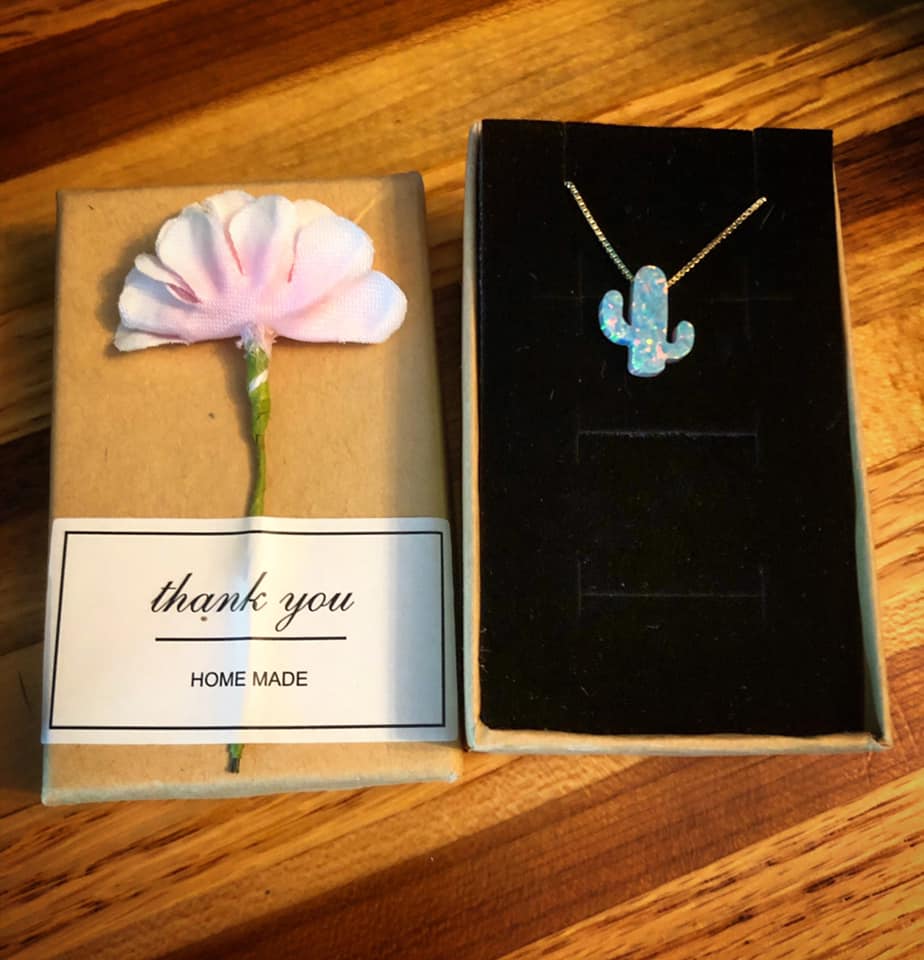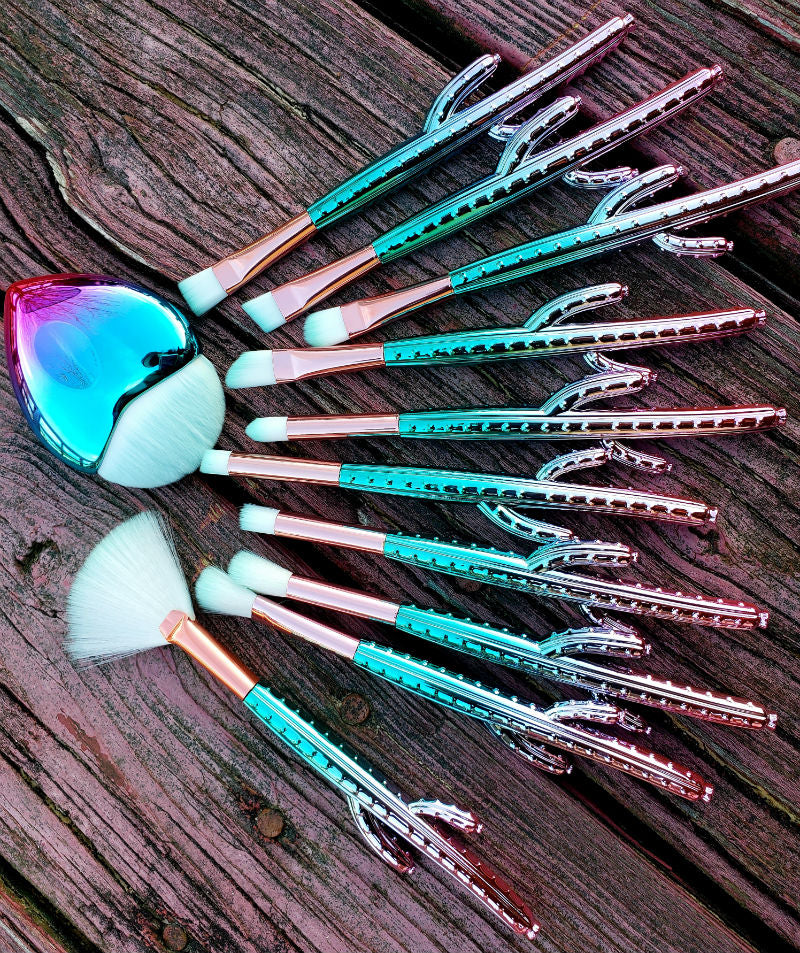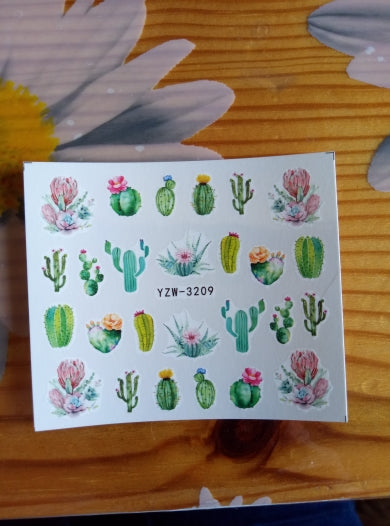Grow at Home: Hanging Succulent Plants Guide

Ready to turn your home into a green oasis? Let's talk about hanging succulent plants, aka trailing succulents.
Hanging succulent plants can be a terrific addition to both your indoor and outdoor space. They bring a special and eye-catching touch to your decoration.
Whether you're new to gardening or a planting pro, these plants are pretty amazing. Imagine beautiful leaves streaming down, adding color and calm to your space. But these plants aren't just pretty – they're easy to care for and good for your health, too!
In this guide, we'll cover everything you need to know about growing and caring for hanging succulents at home. From picking the right plants to keeping them healthy, we've got you covered.
So, let's get started on this plant journey together and spruce up your home with some lovely trailing succulents!
Here are just a few of the most popular hanging succulents that you'll enjoy growing:
The String of Pearls (Senecio rowleyanus) is a popular succulent known for its unique bead-like leaves.

Available on Amazon: https://amzn.to/3M9OoHW
Here's information on the growth and care of String of Pearls succulent plants:
Appearance: The String of Pearls has long, slender stems that cascade down and can grow up to several feet in length!
The leaves are small, circular, and green, resembling a string of pearls or small peas. The plant's stems are usually green, but they may grow a slight purplish tint under some conditions.
Succulent Lighting: The String of Pearls thrives in bright, indirect light. It's best to make sure thy have a few hours of direct sunlight in the morning or evening, but they should be protected from heavy, midday sun.
Not getting enough light can cause the plant to become leggy and lengthened, while too much direct sunlight can scorch the leaves.
Succulent Watering: Like most succulents, the String of Pearls has low water needs. It's important to let the soil dry out between waterings to prevent overwatering, which can cause root rot.
Water the plant completely, and allow the excess water to drain away. During the growing season (Spring and Summer), water about once every two weeks, and lower watering in the winter when the plant goes inactive.
Soil: Use a well-draining soil mix specially prepared for succulents and cacti.
These mixes usually contain a combination of potting soil, sand, and perlite, which help promote good drainage and prevent the roots from sitting in water.
The Best Cactus and Succulent Soil Mix
Temperature and Humidity: The String of Pearls prefers average room temperatures ranging from 60°F to 75°F (15°C to 24°C).
It can tolerate slightly cooler temperatures but should be protected from frost. This succulent adapts well to indoor conditions and is not too sensitive to levels of humidity.
Succulent Propagation: The String of Pearls can be propagated through stem cuttings.
Simply snip off a healthy stem section, remove the lower leaves, and allow it to callus for a day or two. Then place the cutting in a well-draining succulent mix and keep it lightly moist until roots develop.
Basic Succulent Care:
1. Avoid overwatering. It is one of the most common causes of succulent plant damage.
2. Provide decent airflow to prevent fungal issues.
3. Turn the plant from time to time to assure even growth and avoid one-sided lengthening.
4. Fertilize sparingly. A diluted, balanced succulent fertilizer can be added once a month during the growing season (Spring and Summer).
With proper care and attention, your hanging String of Pearls succulent plant can thrive and create a beautiful hanging arrangement.
Burro's Tail (Sedum morganianum), with its long, trailing stems covered in plump, bluish-green leaves, the Burro's Tail is one of the most popular hanging succulents.

Available on Amazon: https://amzn.to/42BPH9x
Here's information on the growth and care of Burro's Tail succulent plants:
Appearance: Burro's Tail (Sedum morganianum) is a beautiful hanging succulent plant known for its long, trailing stems covered in plump, bluish-green leaves.
Here's some basic information on the growth and care of Burro's Tail succulent plants:
Growth Habit: Burro's Tail has trailing stems that can grow up to several feet long. The stems are densely covered with succulent leaves, giving them a very unique look.
Over time, the stems can turn quite thick and heavy, making them to hang down dramatically.
Succulent Lighting: Burro's Tail prefers bright, indirect light. It can tolerate some direct sunlight, especially if it's adapted gradually.
However, intense or extended exposure to direct sunlight can scorch the leaves. Place your plant near a window where it can take bright, filtered light for a few hours a day.
Temperature: Burro's Tail thrives in temperatures between 60°F and 75°F (15°C to 24°C).
It is sensitive to frost and cold temperatures, so it's best to keep it indoors or provide protection during winter if you live in a colder climate.
Succulent Watering: As a succulent, Burro's Tail is adapted to arid conditions and has low water requirements.
Allow the soil to dry out almost completely between waterings to prevent overwatering, as excessive moisture can cause root rot. Water deeply, allowing the water to drain through the pot, and avoid leaving the plant sitting in water.
Succulent Soil Mix: Use a well-draining succulent or cactus soil mix. The soil should be loose and airy to allow excess moisture to drain away quickly. A mix that includes sand, perlite, or pumice is ideal for promoting good drainage.
Humidity: Burro's Tail prefers low humidity environments. Average indoor humidity levels are usually suitable for this plant.
However, if the air becomes too dry, you can on occasion mist the plant or place a tray with water near it to increase humidity.
Succulent Propagation: Burro's Tail can be propagated easily from stem cuttings. Simply snip off a healthy stem section, allow it to dry for a day or two to form a callus, and then place it in well-draining soil. Keep the soil lightly moist until roots develop.
Basic Succulent Care:
1. Avoid handling the leaves too much because they are delicate and can fall off easily.
2. Protect the plants from drafts or sudden temperature changes.
3. Fertilize sparingly. A diluted succulent or cactus fertilizer should be applied only once or twice during the growing season (Spring and Summer).
With proper care, Burro's Tail can grow into a lush and cascading display of trailing stems. Remember to provide it with the right amount of light, water, and well-draining soil to ensure healthy growth.
String of Hearts (Ceropegia woodii), this delicate succulent features long, trailing stems adorned with small, heart-shaped leaves.

Available on Amazon: https://amzn.to/44XyOYB
Here's information on the growth and care of String of Hearts succulent plants:
Growth Habit: String of Hearts has long, slender trailing stems that can reach several feet in length.
The leaves are small, shaped like hearts, and vary in color from green to purple. The vines often hang and flow gracefully, making it an excellent choice for hanging baskets or trailing down from shelves.
Succulent Lighting: String of Hearts thrive in bright, indirect light. It prefers a few hours of direct sunlight in the morning or evening, but it should be protected from intense, midday sun.
Insufficient light can cause the plant to become leggy and pale, while too much direct sunlight can scorch the leaves. Place it near a window with filtered sunlight or provide artificial grow lights.
Temperature: String of Hearts prefers average room temperatures ranging from 60°F to 75°F (15°C to 24°C).
It can handle slightly cooler temperatures but should be protected from frost. Avoid placing it in drafty areas or near cold windows during the winter.
Succulent Watering: Like most succulents, the String of Hearts has low water requirements. It is better to underwater than overwater this plant.
Allow the soil to dry out partially between waterings, but avoid letting it completely dry out or become bone dry. Water deeply and thoroughly, allowing the water to drain through the pot. In winter, reduce watering frequency as the plant goes dormant.
Succulent Soil Mix: Use a well-draining soil mix specifically formulated for succulents or cacti. It should have good drainage and aeration to prevent waterlogged roots. A mix containing perlite, sand, or pumice can help improve drainage.
Humidity: The String of Hearts prefers average indoor humidity levels and is not particularly sensitive to humidity. It can adapt to normal household humidity conditions.
Succulent Propagation: String of Hearts can be propagated from stem cuttings or by planting tubers that form along the vines. Cut a healthy stem segment, remove the lower leaves, and allow it to callus for a day or two.
Place the cutting in well-draining succulent soil or a glass of water until roots develop. Alternatively, place the tubers in the soil and keep them lightly moist until they sprout.
How to Grow Succulents in Water
Basic Succulent Care:
1. Turn the plant occasionally to ensure even growth and avoid one-sided stretching.
2. Avoid overwatering, since it can lead to root rot. It's better to water less. String of Hearts can handle being dry better.
3. Fertilize sparingly. A diluted balanced succulent fertilizer can be applied during the growing season (Spring and Summer), but avoid fertilizing during Winter.
With proper care, the String of Hearts can grow into lush cascading vines, creating an elegant and beautiful display. Remember to provide it with the right amount of light, water, and well-draining soil to ensure it's healthy growth.
Donkey's Tail (Sedum morganianum), similar in appearance to the Burro's Tail, the Donkey's Tail has long, trailing stems covered in plump, blue-green leaves.

Available on Amazon: https://amzn.to/3ItjadA
Here's information on the growth and care of Donkey's Tail succulent plants:
Growth Habit: Donkey's Tail has trailing stems that can grow up to several feet long.
The stems are densely covered with fleshy, cylindrical leaves that give the plant a tail-like appearance. Over time, the stems can become fairly heavy and hang down dramatically.
Succulent Lighting: Donkey's Tail thrives in bright, indirect light. It can tolerate some direct sunlight, especially if it's gradually adapted.
Also, intense or prolonged exposure to direct sunlight can scorch the leaves. So it's best to place your succulent near a window where it can receive bright, filtered light for a few hours a day
Temperature: Donkey's Tail prefers average room temperatures ranging from 60°F to 75°F (15°C to 24°C).
It is sensitive to frost and cold temperatures, so it's best to keep it indoors or provide protection during winter if you live in a colder climate.
Succulent Watering: As a succulent, Donkey's Tail has low water requirements. Allow the soil to dry out almost completely between watering to prevent overwatering, as excessive moisture can lead to root rot.
Water deeply, allowing the water to drain through the pot, and avoid leaving the plant sitting in water. In winter, reduce watering frequency as the plant goes inactive.
Succulent Soil Mix: Use a well draining succulent or cactus soil mix. The soil should be loose and airy to allow excess moisture to drain away quickly. A mix that includes sand, perlite, or pumice is ideal for promoting good drainage.
Humidity: Donkey's Tail prefers low humidity environments. Average indoor humidity levels are usually suitable for this plant.
However, if the air becomes excessively dry, you can occasionally mist the plant or place a tray with water near it to increase humidity.
Succulent Propagation: Donkey's Tail can be propagated from stem cuttings. Simply snip off a healthy stem section, allow it to dry for a day or two to form a callus, and then place it in well-draining soil. Keep the soil lightly moist until roots develop.
Basic Succulent Care:
1. Avoid handling the leaves too much. They are very delicate and can fall off easily.
2. Protect the plant from drafts or sudden temperature changes.
3. Fertilize sparingly. A diluted succulent or cactus fertilizer can be applied once or twice during the growing season (Spring and Summer).
With proper care, Donkey's Tail can grow into a lush and cascading display of trailing stems. Remember to provide it with the right amount of light, water, and well-draining soil to ensure its healthy growth.
Rhipsalis is a different genus of succulent plants that belong to the Cactaceae family. They are unique among succulents as they are epiphytic, meaning they naturally grow on trees or rocks rather than in the ground.

Available on Amazon: https://amzn.to/45b0w49
Here's information on the growth and care of Rhipsalis succulent plants:
Growth Habit: Rhipsalis has a hanging down loosly growth habit, with long, thin, and flexible stems that can vary in shape and length depending on the species.
Some Rhipsalis types have flat, segmented stems, while others have round or hanging stems. They often look bushy or flow downwards.
Succulent Lighting: Rhipsalis thrives in bright, indirect light. It prefers filtered sunlight or partial shade rather than direct sun exposure.
Place your Rhipsalis plant near a window with bright, indirect light or in a spot with dappled shade. Avoid exposing it to intense midday sun, because that can cause sunburn or leaf damage.
Temperature: Rhipsalis prefers average room temperatures ranging from 60°F to 75°F (15°C to 24°C).
It can tolerate slightly cooler temperatures but should be protected from frost. Avoid placing it in drafty areas or near cold windows during winter.
Succulent Watering: Rhipsalis has slightly higher water needs compared to many other succulents.
It prefers evenly moist soil but should not be waterlogged. Water thoroughly when the top inch of soil feels dry, allowing excess water to drain away. In winter, reduce watering frequency but do not let the soil dry out completely.
Succulent Soil Mix: Use a well-draining soil mix that retains some moisture. A mix formulated for epiphytic cacti or orchids, consisting of peat moss, perlite, and orchid bark, is suitable for Rhipsalis. It provides good drainage while retaining some moisture to meet the plant's water needs.
Humidity: Rhipsalis prefers higher humidity levels than many other succulents. Mist the plant occasionally or place a tray of water nearby to increase humidity, especially in dry indoor settings or during winter when indoor heating can cause low humidity.
Succulent Propagation: Rhipsalis can be propagated from stem cuttings. Simply snip off a healthy stem segment and allow it to dry for a day or two to form a callus. Then place the cutting in well-draining soil or water until roots develop.
Basic Succulent Tips:
1. Provide good air circulation to prevent fungal diseases. Avoid overcrowding or placing the plant in stagnant air.
2. Fertilize sparingly. A diluted, balanced fertilizer for cacti or succulents can be applied once a month during the growing season (Spring and Summer).
Rhipsalis succulents are beautiful and unique additions to any indoor or outdoor space. With the right care, they can thrive and create a stunning display. Remember to adjust the watering and humidity levels according to the specific needs of your Rhipsalis species.
As we finish our look into hanging succulent plants to grow at home, let's go over some of the good things you get from having them in your indoor garden.
First, hanging succulent plants bring nature's beauty inside, with their trailing leaves adding a fresh and lively touch to any room. Their special way of growing adds depth to your decorations, making attractive arrangements that lift your spirits.
Apart from looking pretty, these tough plants are easy to look after, needing little care but giving lots of joy. They can grow well in different places, so whether you're new to gardening or have lots of experience, they're perfect for you. And because they're so adaptable, you can try them out in different places until you find the best spot for your hanging succulent garden.
If you've been unsure about starting your own hanging succulent garden, now's the time to give it a try. Whether you choose just one plant or a bunch of different ones, taking care of them will make you happy and fulfilled.
As you start your green journey, remember these simple tips for looking after your hanging succulents. Give them enough sunlight, water them carefully, and use soil that drains well to avoid root problems. Check your plants regularly for bugs or sickness, and trim them if necessary to help them grow well.
Follow these easy steps for beautiful hanging succulent plants to grow at home. Choose your favorite types, hang them up, and see how they turn your home into a peaceful haven filled with natural beauty.
Happy Hanging Succulent Gardening!
As an Amazon Associate we earn from qualifying purchases.












